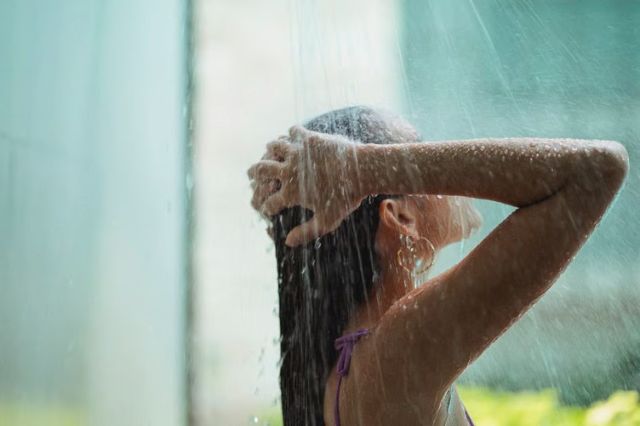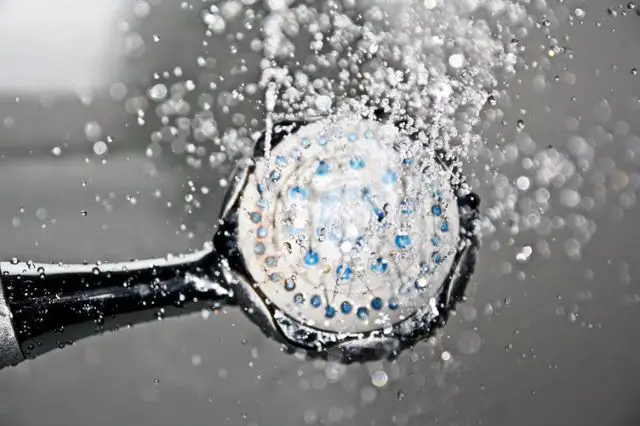How to Identify and Repair Shower Leaks

Detecting and fixing leaks in your shower is crucial to maintain your home’s integrity and prevent costly water damage. A leaking shower can lead to a host of problems, including structural damage, mold growth, and wasted water.
This guide aims to help homeowners identify signs of a shower leak early on and provides step-by-step instructions for repairing common issues.
Whether you’re dealing with a faulty showerhead, a compromised seal, or a more complex plumbing problem, we’ve got you covered with expert advice to ensure your shower is watertight and fully functional.
Identifying the Signs of Shower Leaks
One of the initial steps to take in addressing a leaking shower is to recognize the warning signs that suggest a potential problem. These signs are crucial indicators and can include the presence of water stains on the ceiling below the bathroom, peeling paint or wallpaper, the growth of mold or mildew, and an unexpected rise in water bills.
Regularly inspecting these areas is of utmost importance as it enables you to detect leaks early on, preventing them from escalating and causing substantial damage over time. Being proactive about identifying these signs can help you stay ahead of potential issues and maintain the integrity of your bathroom.
Inspect the Showerhead
A common source of shower leaks often originates from the showerhead itself. Therefore, it is imperative to thoroughly check the showerhead for any indications of wear or damage, such as cracks or loose connections.
If you observe water spraying irregularly or notice visible mineral deposits, it may be the appropriate time to consider cleaning or replacing the showerhead. Addressing these issues promptly can help prevent further complications and maintain the proper functioning of your shower.
Taking care of your showerhead not only ensures a pleasant shower experience but also contributes to water conservation efforts.
Check the Shower Door Seal
Shower doors can also be a contributing factor to water leaks if their seals become compromised. Regularly assessing the integrity of the door seals for any signs of deterioration can aid in preventing water from escaping the shower area.
Opting to replace the seals when necessary is a straightforward yet effective solution to mitigate this specific problem, ensuring that your shower remains watertight and leak-free.
By paying attention to details like the shower door seal, you can avoid potential water damage issues and enjoy a worry-free showering experience.
Examine the Shower Tray and Tiles
The presence of cracks or gaps in the shower tray or tiles can potentially allow water to seep through, resulting in damage over time. Therefore, conducting a thorough inspection of these areas for any visible signs of damage is essential.
Timely repair or sealing of cracks and gaps is vital to uphold a watertight shower environment, preventing water leaks and maintaining the structural integrity of your shower space.
Keeping an eye on the condition of your shower tray and tiles can prolong the longevity of your shower and save you from costly repairs in the future.
Evaluate the Grout and Caulking
Grout and caulking serve as essential barriers against water penetration in the shower. However, with time, these components can wear down or develop cracks, increasing the risk of leaks.
Regularly assessing these areas and applying fresh grout or caulking where needed can significantly reduce the likelihood of leaks occurring, ensuring the continued effectiveness of these protective measures.
Maintaining the grout and caulking in your shower not only enhances its appearance but also reinforces its defense against water leaks, preserving the quality of your shower space.
Testing for Hidden Leaks
In cases where the source of the leak is not readily identifiable, conducting a water test can provide valuable insights. This test involves blocking the drain, filling the shower with a small amount of water, and marking the water level.
If you observe a significant drop in water level over time without the shower being in use, there may be a concealed leak that warrants further investigation. Taking proactive measures to address hidden leaks can prevent extensive water damage and maintain the functionality of your shower.
Performing periodic water tests can help you detect hidden leaks early on and avoid potential structural issues down the line.
Repair or Replace Faulty Fixtures
Upon identifying the source of the leak, the subsequent step involves determining whether to repair or replace the faulty fixtures. While replacing worn-out parts or sealing materials can resolve certain issues, more severe problems may necessitate a complete replacement of affected fixtures to prevent recurrent leaks.
Seeking professional help for shower sealing is an important decision to ensure a lasting solution and avoid future leaks. Making informed decisions regarding repair or replacement is essential in safeguarding your shower against potential water damage and ensuring its long-term functionality.
Addressing faulty fixtures promptly not only prevents water leaks but also contributes to the overall safety and longevity of your shower.
Bathroom Remodel Considerations
When addressing shower leaks, homeowners often contemplate a full-scale bathroom remodel as a comprehensive solution. A remodel not only provides the perfect opportunity to fix any underlying issues causing leaks but also allows for the enhancement of the bathroom’s aesthetic and functional aspects.
Whether it’s upgrading fixtures, improving water efficiency, or reconfiguring the layout for better space utilization, a remodel can significantly increase your home’s value and personal enjoyment of the space.
However, it’s essential to consider the scope of the remodel, your budget, and potential return on investment, ensuring that the project aligns with both your immediate needs and long-term plans.
Engaging with experienced professionals can help streamline the process, from planning to execution, to achieve a remodel that meets your expectations while addressing any leakage problems thoroughly.
When to Call a Professional
While many shower leaks can be remedied through DIY solutions, more complex or inaccessible leaks may require the expertise of a professional plumber. If you feel uncertain about performing the repairs yourself or if the leak persists despite your attempts to resolve it, seeking professional assistance is advisable.
By enlisting the help of a qualified plumber, you can ensure that the repair is carried out safely and effectively, protecting your home from the risks associated with water damage.

Effectively identifying and repairing shower leaks is essential for maintaining the structural integrity of your home and conserving water. Armed with the knowledge to recognize warning signs and the skills to address common leak issues, homeowners can take proactive measures to protect their property from water damage.
Whether opting for DIY fixes or deciding to undertake a comprehensive bathroom remodel, it’s always important to weigh the complexity of the repair and consider seeking professional assistance when needed.
Remember, timely interventions not only save on potentially costly repairs but also contribute to a more sustainable household by minimizing water waste. By following the guidance provided in this document, you can ensure that your shower remains in optimal condition, offering a refreshing and leak-free experience for years to come.





